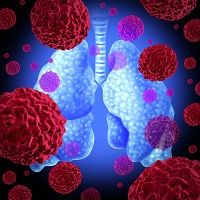Article
Driving Risk Factors Behind Ventilator-Associated Pneumonia
Author(s):
Ventilators that help patients breathe can be life-saving devices; however, they also have the power to cause deadly ventilator-associated pneumonia (VAP).

Ventilators that help patients breathe can be life-saving devices; however, they also have the power to cause deadly ventilator-associated pneumonia (VAP).
There’s a dual pathogenesis when it comes VAP: colonization and aspiration. At the CHEST 2015 meeting in Montréal, Canada, Marin Kollef, MD, a professor of medicine at Washington University in Missouri, spoke on the latest research identifying different respiratory therapy devices which can promote VAP. Unfortunately, there is sometimes a lack in attention to detail which contributes to VAP rates.
Before diving into all of the different devices that can help or hurt infection rates, Kollef detailed independent risk factors of VAP including:
- Intracranial pressure monitor
- Treatment with cimetidine
- Hospitalization in the fall and winter
- Ventilator circuit changes every 24 hours
“The tube in and of itself plays a major role in the infection,” Kollef said during the presentation. “We think that tracheal tube promotes colonization.” It’s been determined that the longer the tube is in, the higher the risk of developing VAP. However, it’s also been recognized that constantly changing it out is linked to infection. Therefore, there’s been controversy over when to change the ventilator circuit.
In one trial, researchers compared patients whose circuits were changed every 48 hours with those whose were left unchanged. The results showed no differences between the groups, so it’s suggested that there is no benefit to changing it. A supporting study conducted the same kind of experiment with changing patients’ circuits every seven days versus not at all. Again, there were no changes in infection rate or mortality.
Years ago, before such information was available, manufactures of the circuits recommended more frequent changes — but that doesn’t hold up anymore. “We don’t have any evidence that changing the ventilator more frequently is beneficial,” Kollef confirmed.
The type of tube may not matter all that much either. Researchers tested four different kinds of tracheal tubes only to find that there was no difference in occurrence of VAP. The different components of tracheal tubes present a challenge when it comes to decision-making time. Luckily, studies have indicated that there are ways to reduce VAP.
Subglottic secretion drainage (SSD) gets rid of secretions above the endotracheal tube before they can be aspirated. Kollef referenced a study which showed using SSD not only resulted in less days on the ventilator and less days in the hospital, but also a lower VAP rate. Another strategy is the use of a silver-coated endotracheal tube (ETT). When compared to a control group in a study, infection instances decreased.
Common canister is the protocol of administering medication from a single Metered Dose Inhaler (MDI). Kollef and colleagues evaluated the practice and the only thing that they found, which “we can’t explain,” is that the people on common therapy had more venous air embolism (VAE) events.
“Our study is the only study to date in the ICU,” Kollef said about the single canister. “I don’t know if it’s ready for primetime yet.” Common canister use may be okay in the ICU if they’re used in the proper way, he continued. Notably, other smaller analyses have been conducted outside of the ICU, however, Kollef believes that more data is needed before they can start recommending it in common practice.
Future research needs to look more into devices that can deliver medications, but prevent infections such as VAP.





